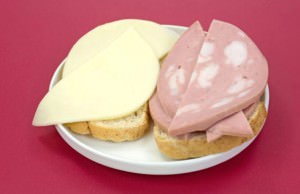Why Are We Avoiding Gluten?

Gluten, a heavily consumed protein, is created when two molecules, glutenin and gliadin, come into contact.
When bakers make dough, that bond creates an elastic membrane, which is what gives bread its chewy texture and allows pizza chefs to toss the dough into the air.
Gluten also traps carbon dioxide, which ferments and adds volume to the loaf. We have been eating wheat, and the gluten with it, for ten thousand years.
For people with celiac disease—about one per cent of the population—the briefest exposure to gluten can trigger a reaction which can severely damage the surfaces of the small intestine. Even reusing water in which pasta has been cooked can be dangerous.
William Davis, a cardiologist whose book “Wheat Belly” advocates that gluten is a poison, has made gluten a culinary villain. He believes that even “healthy” whole grains are somewhat destructive, and he has blamed gluten for everything from arthritis and asthma to multiple sclerosis and even schizophrenia.
RELATED: Top 6 Gluten-Free Products Our Shelves Have Been Missing









